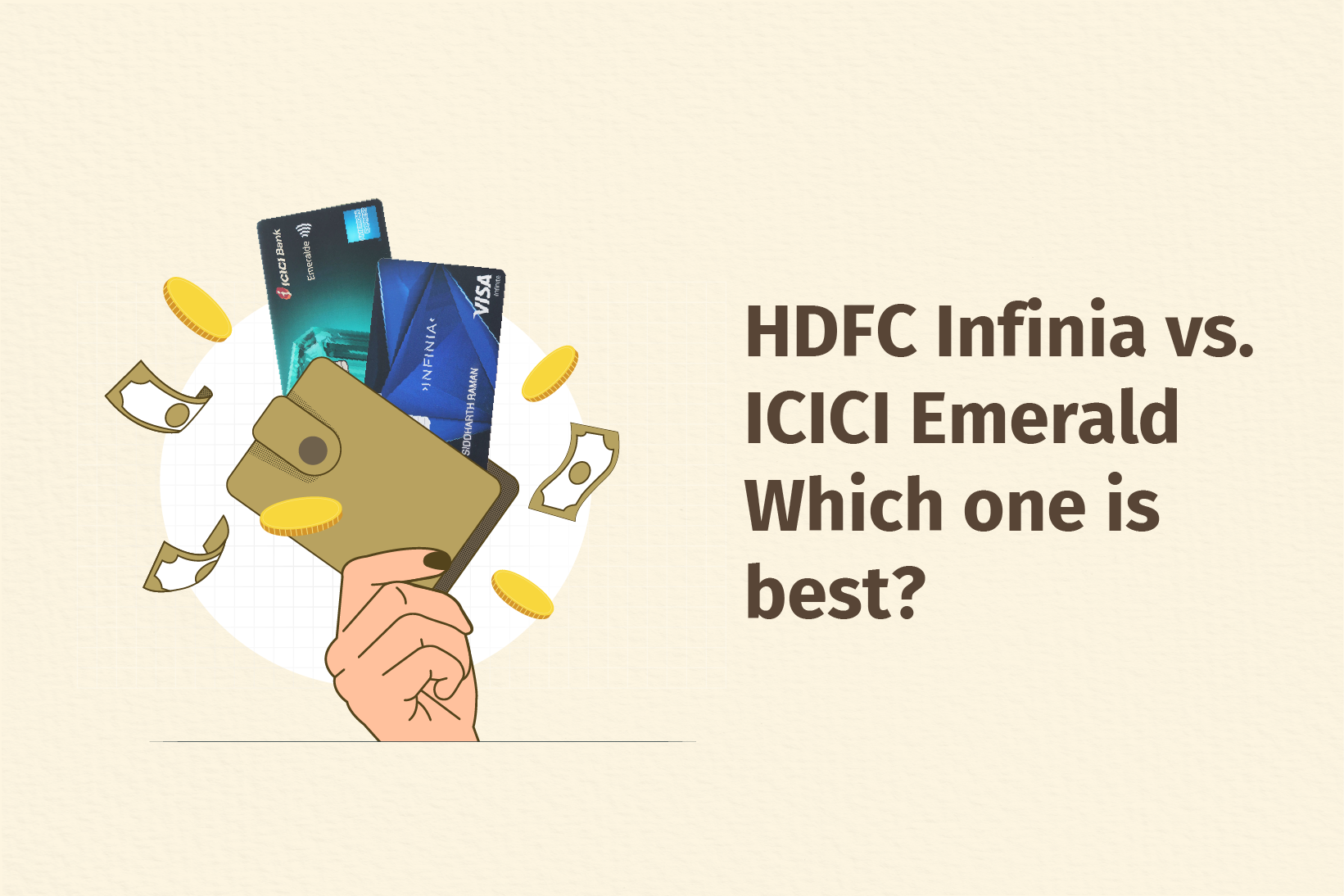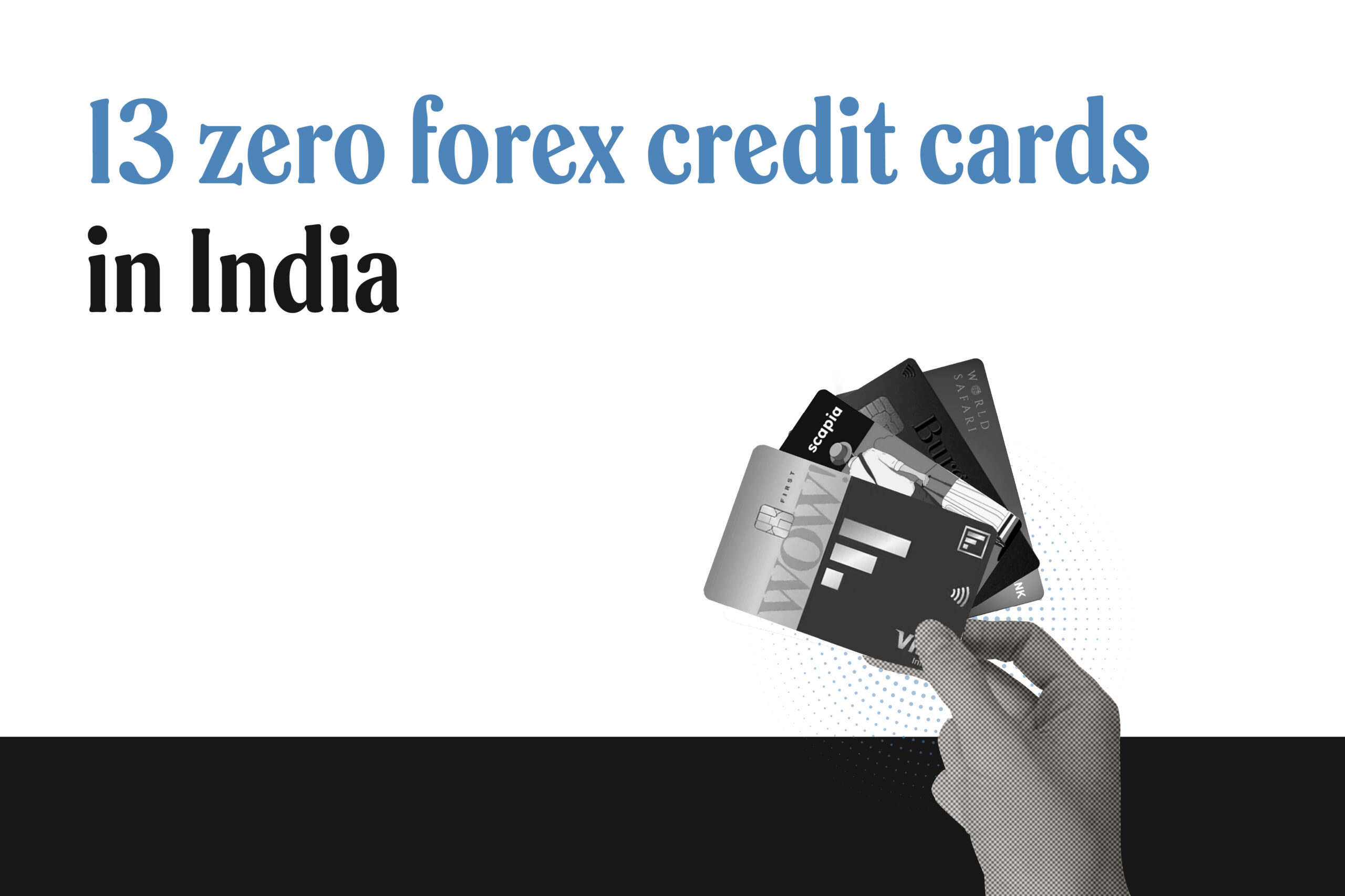Credit cards—often viewed as a great tool of convenience by some due to their ease of use —are also seen by many as a gateway to overspending. Nevertheless, in India, the use of credit cards as a payment mechanism has skyrocketed in the last few years. Credit card spending among Indians rose to Rs 1.65 trillion in December 2023, reflecting mixed spending trends in point of sale (PoS) and e-commerce payments1. If you are someone looking to buy a credit card, here’s a guide on how to compare credit cards:
With a plethora of credit cards available in the market, each offering unique features, rewards, and benefits, choosing the right one can be a daunting task. However, by understanding how to compare credit cards and the key factors to consider, you can find the perfect card that aligns with your spending habits and lifestyle. In this comprehensive guide, we’ll walk you through the essential aspects of comparing credit cards and provide practical tips to help you make an informed decision.
Understanding Different Types of Credit Cards in India
Credit cards are typically designed to cater to specific spending categories, which defines the type of credit card. Below are some of the most common types of credit cards available in India. Click on the respective links to learn more about each category and discover the best credit cards in detail. When choosing the right card for you, it’s essential to compare credit cards to find the one that best suits your needs.
Travel Credit Cards
These cards are designed to help users save on travel expenses by offering air miles, free flights, discounted hotel stays, airport lounge access, travel insurance, and more. Be sure to compare credit cards in this category to maximize your travel benefits.
Shopping Credit Cards
Focused on providing savings on both online and offline shopping, these cards offer rewards points, cashback, discounts, or co-branded benefits. Compare credit cards to find the best deals for your shopping habits.
Rewards Credit Cards
These cards provide reward points for every purchase, which can later be redeemed for vouchers or merchandise from the issuer’s rewards catalogue, or converted to air miles or cashback.
Cashback Credit Cards
These cards offer a percentage of the spend back to the user as direct cashback instead of reward points. When you compare credit cards, look for the highest cashback rates and categories that match your spending.
Fuel Credit Cards
Designed to help cardholders save on fuel expenses, these cards offer extra reward points on fuel purchases. Many are co-branded with fuel companies like Indian Oil, HPCL, BPCL, etc. Compare credit cards to find the best fuel savings.
Lifetime-free Credit Cards
These cards charge no joining fee or annual fee, making them cost-effective for long-term use.
Entry-level Credit Cards
Typically low-fee cards with easier eligibility terms and basic rewards structures, these are suited for beginners.
Dining Credit Cards
These cards offer savings on dining expenses through reward points, discounts, co-branded benefits, and free memberships. Compare credit cards to enjoy the best dining rewards.
Co-branded Credit Cards
Ideal for brand loyalists, these cards offer higher rewards or cashback when shopping with the associated brand.
Grocery Credit Cards
These cards reward users for their spending on groceries and purchases at departmental stores.
Premium Credit Cards
Suited for high-income individuals, these cards come with luxury benefits that are not available with regular cards.
Hotel Credit Cards
These cards help users avail of discounted stays, free memberships, or other benefits, allowing travelers to save on hotel expenses.
Business Credit Cards
Issued in the name of an organization or its employees, these cards provide benefits that can help businesses save on operational costs. Compare credit cards to optimize your business spending.
Identifying Your Spending Habits
Before diving into the comparison process, it’s crucial to assess your spending habits. Ask yourself the following questions:
- What are your most significant monthly expenses (e.g., groceries, dining out, fuel, entertainment)?
- Do you frequently shop at specific stores or online marketplaces?
- How often do you travel, and what type of travel do you prefer (e.g., domestic, international, luxury, budget)?
- Do you have any recurring bills or subscriptions that could be charged to a credit card?
By understanding your spending patterns, you can narrow down your search to credit cards that offer rewards and benefits that best suit your lifestyle.
Also read: https://1finance.co.in/blog/understanding-credit-scores-and-their-importance-in-personal-loans-2/
Comparing Rewards and Benefits
Rewards and benefits are a significant factor in credit card comparison, as they can provide substantial value if aligned with your spending habits. When evaluating credit cards, it’s essential to look beyond the surface and consider the features that truly matter to you.
- Daily Expenditure Patterns: Analyse your daily spending habits and look for cards that offer accelerated rewards in categories where you spend the most. For example, if you frequently dine out or order food online, a card that offers higher reward rates on dining and food delivery would be a perfect fit.
- Embedded Benefits: Many credit cards come with embedded benefits that can add significant value to your card membership. These may include complimentary airport lounge access, travel insurance, extended warranty on purchases, or even free subscriptions to popular services. Consider which benefits align with your lifestyle and can help you save money in the long run.
- Fine Print and Fees: While rewards and benefits are attractive, it’s crucial to examine the fine print and understand the fees associated with each card. Look for cards with reasonable annual fees, low interest rates, and minimal charges for services like cash advances or foreign transactions. Evaluate whether the rewards and benefits justify the costs involved.
- Reward Redemption Flexibility: Consider the flexibility and ease of redeeming your rewards. Some cards may offer a wide range of redemption options, such as statement credits, travel bookings, merchandise, or gift cards, while others may have more limited choices. Ensure that the redemption options align with your preferences and provide good value for your accumulated points or miles.
- Sign-up Bonuses: Many credit cards offer lucrative sign-up bonuses for meeting a minimum spending requirement within the first few months. These bonuses can be in the form of cashback, reward points, or travel miles. Compare the value of these bonuses and the spending requirements across different cards to maximise your initial rewards.
- Dynamic Valuations: Keep in mind that the value of rewards and benefits can vary depending on how you redeem them. For example, redeeming points for travel bookings may yield a higher value compared to redeeming them for merchandise or statement credits. Consider your redemption preferences and look for cards that offer the best value for your desired redemption options.
Evaluating Fees and Interest Rates
While rewards and benefits are attractive, it’s essential to consider the costs associated with credit cards. Pay close attention to the following:
- Annual fees: Some credit cards charge an annual fee, while others don’t. Assess whether the rewards and benefits justify the annual fee based on your spending habits. Calculate the break-even point, which is the amount you need to spend annually to offset the annual fee with the rewards earned.
- Interest rates: If you tend to carry a balance on your credit card, look for cards with lower interest rates to minimise the cost of borrowing. Compare the Annualised Percentage Rate (APR) across different cards, taking into account any introductory APR offers.
- Other fees: Be aware of other potential fees, such as late payment fees, over-limit fees, and foreign transaction fees, which can add up quickly. Look for cards that waive these fees or have reasonable charges.
Comparing Credit Card Issuers and Networks
When comparing credit cards, it’s also essential to consider the reputation and services provided by the card issuer and the payment network (such as Visa, Mastercard, or American Express).
Some factors to consider include:
- Customer service: Look for issuers known for their responsive and helpful customer support, as you may need assistance with billing issues or fraud prevention. Check customer reviews and ratings to gauge the quality of service provided by the issuer.
- Online and mobile banking: Consider the ease of use and functionality of the issuer’s online and mobile banking platforms, as these can simplify your credit card management. Look for features like real-time transaction alerts, spending categorisation, and the ability to redeem rewards directly through the platform.
- Payment network acceptance: Ensure that the payment network is widely accepted in the places where you frequently shop or travel. While Visa and Mastercard have near-universal acceptance, American Express and Discover may have slightly limited acceptance, especially internationally.
- Additional services: Some issuers offer additional services like free credit scores, identity theft protection, or concierge services, which can add value to your card membership. Evaluate these services based on your needs and preferences.
Using Credit Card Comparison Tools
To simplify the process of comparing credit cards, take advantage of online credit card comparison tools. These tools allow you to input your preferences, such as reward types, desired features, and monthly spending, and provide a list of cards that match your criteria.
However, keep in mind that these tools may not include all available credit cards in the market, and the results may be influenced by advertising partnerships. Use these tools as a starting point for your research, but always conduct thorough due diligence before applying for a card.
Conclusion
Comparing credit cards is a crucial step in finding the right card that aligns with your spending habits and lifestyle. By assessing your spending patterns, evaluating rewards and benefits, considering fees and interest rates, and comparing credit card issuers and networks, you can make an informed decision that maximises your benefits while minimising costs.
Remember to use credit card comparison tools as a starting point, but always conduct thorough research and read the fine print before applying for a card. By being a savvy credit card shopper and using your card responsibly, you can enjoy the many benefits that credit cards offer while making the most of your everyday spending.







